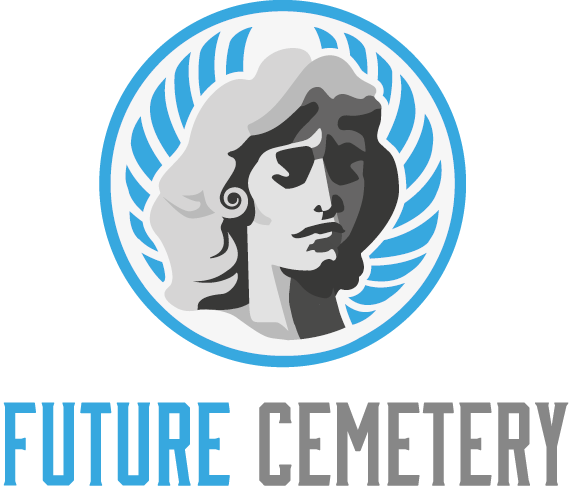Di era digital saat ini, permainan togel semakin berkembang dan menjadi salah satu pilihan hiburan yang populer di kalangan masyarakat. Salah satu situs yang banyak dibicarakan di kalangan pecinta togel adalah Wargatoto. Situs ini menawarkan berbagai jenis permainan togel yang menarik dan memberi kesempatan kepada para pemain untuk meraih kemenangan besar. Namun, bagi pemula, dunia togel bisa terasa membingungkan. Oleh karena itu, penting untuk memahami bagaimana cara mendaftar, bermain, dan menjelajahi semua fitur yang ditawarkan oleh Wargatoto.
Dalam panduan ini, kita akan mengungkap segala hal yang perlu diketahui tentang situs Wargatoto. Mulai dari cara melakukan wargatoto login, menemukan link wargatoto yang aman, hingga langkah-langkah untuk daftar wargatoto dengan mudah. Selain itu, kami juga akan membahas berbagai jenis permainan yang tersedia di situs togel ini dan memberikan tips berguna bagi para pemain baru. Dengan informasi yang tepat, Anda bisa memulai petualangan togel Anda dengan percaya diri.
Apa itu Situs Wargatoto?
Situs Wargatoto adalah platform yang menyediakan layanan permainan togel secara online. Di situs ini, pemain dapat memasang taruhan pada berbagai jenis permainan togel, baik nasional maupun internasional. Dengan kemudahan akses melalui internet, Wargatoto memungkinkan pemain berpartisipasi dalam permainan kapan saja dan di mana saja tanpa harus pergi ke lokasi fisik.
Sebagai salah satu situs togel terkemuka, Wargatoto menawarkan berbagai pilihan permainan yang menarik, termasuk toto togel dan berbagai jenis permainan lainnya. Pengguna dapat menjelajahi berbagai jenis pasaran dan memanfaatkan prediksi untuk meningkatkan peluang menang. Dengan lebih banyak variasi permainan, Wargatoto menarik perhatian para penggemar togel di seluruh Indonesia.
Untuk memudahkan pengguna baru, situs ini juga menyediakan fitur seperti Wargatoto login dan daftar Wargatoto yang sederhana. Hal ini memudahkan anggota baru untuk mendaftar dan mulai bermain tanpa kesulitan. Selain itu, Wargatoto memastikan keamanan data dan transaksi para penggunanya, sehingga pemain dapat merasa nyaman saat menikmati permainan.
Cara Mendaftar di Wargatoto
Untuk mulai bermain di situs Wargatoto, langkah pertama yang harus Anda lakukan adalah mendaftar. Proses pendaftaran sangat mudah dan cepat. Anda cukup mengunjungi halaman utama situs wargatoto dan mencari opsi daftar. Di sana, Anda akan diminta untuk mengisi formulir pendaftaran dengan beberapa informasi dasar, seperti nama, alamat email, dan nomor telepon yang aktif.
Setelah mengisi formulir pendaftaran, pastikan untuk memeriksa kembali semua informasi yang telah Anda masukkan. Kesalahan dalam data bisa menyebabkan masalah ketika Anda mencoba untuk login di wargatoto. Setelah itu, Anda perlu menyetujui syarat dan ketentuan yang berlaku di situs togel ini sebelum menekan tombol ‘daftar’ untuk menyelesaikan proses pendaftaran.
Setelah pendaftaran selesai, Anda akan menerima email konfirmasi. Ikuti petunjuk yang ada di email tersebut untuk mengaktifkan akun Anda. Sekarang Anda sudah bisa melakukan wargatoto login dan mulai menjelajah berbagai permainan yang ditawarkan, termasuk toto togel dan bandar togel.
Panduan Login Wargatoto
Untuk dapat menikmati semua layanan yang ditawarkan oleh situs Wargatoto, langkah pertama yang harus Anda lakukan adalah melakukan login. Proses login ini sangatlah mudah dan cepat. Pertama, kunjungi link Wargatoto yang telah disediakan. Pastikan Anda memasukkan alamat situs yang benar agar terhindar dari situs yang tidak resmi.
Setelah membuka halaman utama situs Wargatoto, cari menu login yang biasanya terletak di pojok kanan atas. Klik pada menu tersebut, dan Anda akan diarahkan ke halaman login. Di halaman ini, Anda perlu memasukkan username dan password yang telah Anda daftarkan sebelumnya saat melakukan pendaftaran. Pastikan informasi yang Anda masukkan benar untuk menghindari kesalahan saat login.
Jika Anda lupa password, Wargatoto juga menyediakan fitur pemulihan untuk mengatur ulang password Anda. Anda hanya perlu mengikuti petunjuk yang diberikan, dan setelah berhasil login, jangan lupa untuk mengganti password Anda jika diperlukan untuk keamanan akun. Setelah semua langkah ini, Anda sudah siap untuk mulai bermain di situs togel tersebut.
Jenis Permainan Togel di Wargatoto
Wargatoto menyediakan berbagai jenis permainan togel yang dapat dipilih oleh para pemain. Salah satu jenis yang paling populer adalah Toto 4D, di mana pemain harus menebak empat angka yang akan keluar. Permainan ini menawarkan hadiah yang besar dan menarik minat banyak penggemar togel. Selain itu, ada juga jenis permainan 2D dan 3D yang memberikan variasi bagi pemain dalam memilih cara bertaruh.
Selain itu, Wargatoto juga menawarkan permainan colok bebas yang memungkinkan pemain untuk memilih angka tanpa harus mempertimbangkan urutan. Ini memberikan kemudahan dan fleksibilitas dalam bermain. Setiap jenis permainan memiliki aturan yang berbeda, namun semuanya bertujuan untuk memberikan pengalaman bermain yang seru dan menguntungkan. Para pemain disarankan untuk memahami setiap jenis permainan sebelum memasang taruhan.
Wargatoto senantiasa menyediakan informasi terbaru mengenai hasil pengundian dan panduan bermain bagi para pemula. Dengan adanya link Wargatoto, pemain dapat dengan mudah mengakses semua jenis permainan togel yang tersedia. Daftar Wargatoto pun cukup sederhana, sehingga siapa saja dapat bergabung dan mencoba peruntungannya dalam dunia togel.
Keamanan dan Kepercayaan dalam Situs Togel
Keamanan dan kepercayaan adalah dua faktor penting ketika memilih situs wargatoto untuk bermain togel. Saat ini, banyak situs togel yang menawarkan berbagai jenis permainan, namun tidak semuanya dapat dipercaya. Sebagai pemain, Anda perlu memastikan bahwa situs yang Anda pilih memiliki lisensi resmi dan menggunakan teknologi keamanan yang canggih untuk melindungi data pribadi dan transaksi keuangan Anda.
Selain itu, reputasi bandar togel juga berpengaruh terhadap tingkat kepercayaan. Cari tahu ulasan dan pengalaman pemain lain mengenai situs toto yang ingin Anda gunakan. Situs yang terpercaya biasanya memiliki layanan pelanggan yang responsif dan transparansi dalam pengelolaan permainan. Ini akan memberikan ketenangan pikiran bagi pemain bahwa pengalaman bermain mereka aman dan adil.
Terakhir, pastikan untuk selalu menggunakan link wargatoto resmi agar terhindar dari situs palsu yang berpotensi merugikan. Dengan memiliki pengetahuan yang cukup dan bersikap hati-hati dalam memilih, Anda bisa menikmati permainan togel dengan tenang dan aman. Melindungi informasi pribadi Anda dan memilih situs yang tepat adalah langkah awal untuk pengalaman bermain yang menyenangkan.
